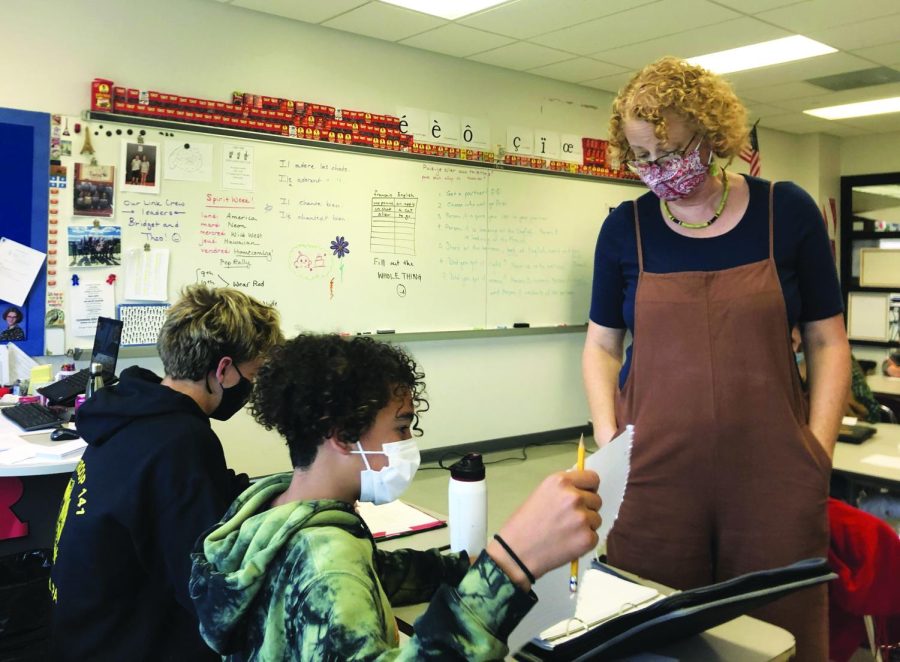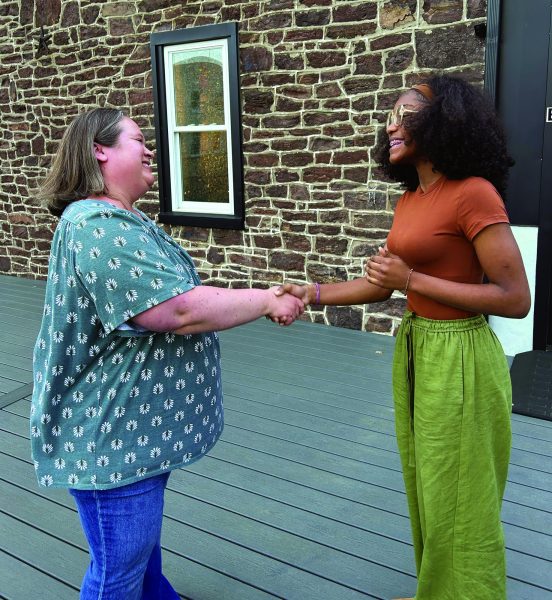Teachers use catchy phrases in the classroom
By using catchphrases, teachers are able to communicate to their students through comedic sayings. Teachers aim to create a relationship with their students by using their creative catchphrases.
To help the students enjoy learning in class, teachers often use catchphrases to communicate with their students about their emotions, frustrations, hopes, or opinions while teaching in the classroom.
A teacher’s possible reason for using their unique catchphrases is to gain the attention of their students.
French teacher Sally Cushmore often finds herself saying “écouté,” the French word for “listen.” Cushmore also uses the phrase, “Kids, I have something interesting,” hoping the students quiet down, which they usually do.
Math teacher Jen Detwiler also works to regain her students’ attention through catchphrases. When Detwiler notices she has lost some of her students’ attention, she purposely mispronounces the names of simple geometric shapes.
“I’ll say tringle a lot of times instead of triangle. And then everybody goes “did she- did she just say tringle?” and now all of the sudden I get everybody back,” Detwiler said.
Detwiler uses another phrase, “Bye kids, make good choices, say ‘no’ to drugs!” every Friday when her students leave for the weekend. This has become such a habit for her that she even accidentally said it to Principal Sam Varano one Friday afternoon.
Detwiler said that Varano laughed in response and assured her that he would make “good choices.”
A catchphrase may be used to help express a certain outlook to students.
A frequent phrase English teacher Mike Sciarra uses is “Whaddya gonna do?” He often uses this saying to describe frustration.
“For me, I guess it’s like something you don’t want to do but you have to do it so, whaddya gonna do about it?” Sciarra said. “You’re not gonna whine about it, you’re not gonna complain about it- you just kinda get on with it and get going.”
By using this phrase, Sciarra tries to communicate to his students that he understands their frustrations.
“I understand where they’re coming from or [their] frustrations and [the catchphrase is] a casual way of acknowledging that [we are all] still pressing on, still moving on,” Sciarra said.
Most teachers’ desire is that their students feel comfortable in class. Detwiler wants her students to feel they can come to her with concerns or questions.
“I want people to be comfortable in my classroom,” Detwiler said. “I want them to be able to talk to me. I want them to be able to ask for help.”
Cushmore hopes to communicate to her students that she wishes for them to enjoy her class and feel comfortable in her classroom.
“I hope they enjoy coming to class, and I hope that they enjoy learning, and I hope they feel comfortable here,” Cushmore said.
Sciarra hopes he creates a comfortable atmosphere for his students while “hopefully having a little bit of fun before walking out the door.”





